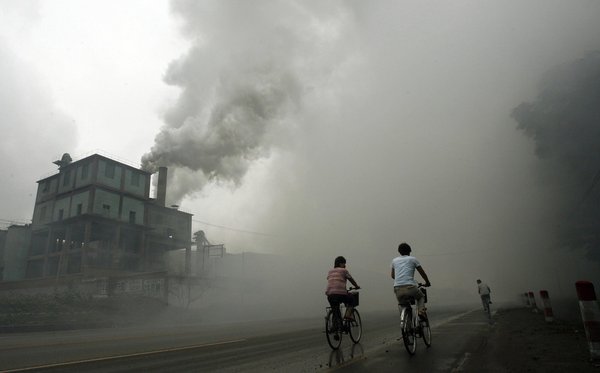Made in China for us: Air pollution tied to exports
The study is the first to quantify how much pollution reaching the American West Coast is from the production in China of cellphones, televisions and other consumer items imported here and elsewhere.
“We’ve outsourced our manufacturing and much of our pollution, but some of it is blowing back across the Pacific to haunt us,” said UC Irvine Earth system scientist Steve Davis, a co-author. “Given the complaints about how Chinese pollution is corrupting other countries’ air, this paper shows that there may be plenty of blame to go around.”
Los Angeles, for instance, experiences at least one extra day a year of smog that exceeds federal ozone limits because of nitrogen oxides and carbon monoxide emitted by Chinese factories making goods for export, the analysis found. On other days, as much as a quarter of the sulfate pollution on the U.S. West Coast is tied to Chinese exports. All the contaminants tracked in the study are key ingredients in unhealthy smog and soot.
China is not responsible for the lion’s share of pollution in the U.S. Cars, trucks and refineries pump out far more. But powerful global winds known as “westerlies” can push airborne chemicals across the ocean in days, particularly during the spring, causing dangerous spikes in contaminants. Dust, ozone and carbon can accumulate in valleys and basins in California and other Western states.
Black carbon is a particular problem: Rain doesn’t easily wash it out of the atmosphere, so it persists across long distances. Like other air pollutants, it’s been linked to a litany of health problems, from increased asthma to cancer, emphysema, and heart and lung disease.
The study authors suggest the findings could be used to more effectively negotiate clean-air treaties. China’s huge ramp-up of industrial activity in recent years, combined with poor pollution controls, has unleashed often fierce international debates.
“When you buy a product at Wal-Mart,” noted Davis, an assistant professor, “it has to be manufactured somewhere. The product doesn’t contain the pollution, but creating it caused the pollution.”
He and his fellow researchers conclude: “International cooperation to reduce transboundary transport of air pollution must confront the question of who is responsible for emissions in one country during production of goods to support consumption in another.”
###
Jintai Lin of Beijing’s Peking University is the paper’s lead author. Others are Da Pan, also of Peking University; Qiang Zhang, Kebin He and Can Wang of Beijing’s Tsinghua University; David Streets of Argonne National Laboratory; Donald Wuebbles of the University of Illinois at Urbana-Champaign; and Dabo Guan of the University of Leeds in England.
About the University of California, Irvine: Located in coastal Orange County, near a thriving employment hub in one of the nation’s safest cities, UC Irvine was founded in 1965. One of only 62 members of the Association of American Universities, it’s ranked first among U.S. universities under 50 years old by the London-based Times Higher Education. The campus has produced three Nobel laureates and is known for its academic achievement, premier research, innovation and anteater mascot. Led by Chancellor Michael Drake since 2005, UC Irvine has more than 28,000 students and offers 192 degree programs. It’s Orange County’s second-largest employer, contributing $4.3 billion annually to the local economy.



Leave a Reply
Want to join the discussion?Feel free to contribute!